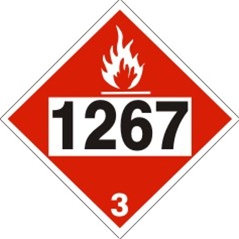Danger Around the Bend
The Threat of Oil Trains in Pennsylvania
A PennEnvironment Report – Read Full Report (PDF)
On the heels of the West Virginia oil train explosion, this new study and interactive map show populations living in the evacuation zone of a potential oil train crash.
PA Oil Train Routes Map
This dynamic map shows the population estimates in Pennsylvania that are within a half-mile of train tracks – the recommended evacuation distance in the event of a crude oil rail car explosion. Zoom in for further detail or view fullscreen.
Danger Around the Bend Summary
The increasingly common practice of transporting Bakken Formation crude oil by rail from North Dakota to points across the nation—including Pennsylvania—poses a significant risk to the health, well-being, and safety of our communities.
This risk is due to a confluence of dangerous factors including, but not limited to:
- Bakken Formation crude oil is far more volatile and combustible than typical crude, making it an incredibly dangerous commodity to transport, especially over the nation’s antiquated rail lines.
- The routes for these trains often travel through highly populated cities, counties and neighborhoods — as well as near major drinking water sources.
- Bakken Formation crude is often shipped in massive amounts — often more than 100 cars, or over 3 million gallons per train.
- The nation’s existing laws to protect and inform the public, first responders, and decision makers are woefully inadequate to avert derailments and worst-case accidents from occurring.
Lac-Mégantic derailment, July 2013. Source
In the past few years, production of Bakken crude oil has dramatically increased, resulting in greater quantities of this dangerous fuel being transported through our communities and across the nation every day. This increase has led to more derailments, accidents, and disasters involving oil trains and putting local com- munities at risk. In the past 2 years, there have been major disasters in Casselton, North Dakota; Lynchburg, Virginia; Pickens County, Alabama; and most recently, Mount Carbon, West Virginia. The worst of these was the town of Lac-Mégantic, in Canada’s Quebec Province. This catastrophic oil train accident took place on July 6, 2013, killing 47 people and leveling half the town.
Oil train accidents have not just taken place in other states, they have also happened closer to home. Pennsylvania has had three near misses in the last two years alone — one near Pittsburgh and two in Philadelphia. In all three cases, trains carrying this highly volatile Bakken crude derailed in densely populated areas, and in the derailment outside of Pittsburgh, 10,000 gallons of crude oil spilled. Fortunately these oil train accidents did not lead to explosions or fires.
All of these incidents point to one fact: that unless we take action to curb the growing threat of oil trains, the next time a derailment occurs an unsuspecting community may not be so lucky.
Bakken oil train routes often travel through high-density cities and neighborhoods, increasing the risk of a catastrophic accident for Pennsylvania’s residents. Reviewing GIS data and statewide rail routes from Oak Ridge National Laboratory, research by FracTracker and PennEnvironment show that millions of Pennsylvanians live within the potential evacuation zone (typically a half-mile radius around the train explosion ). Our findings include:
- Over 3.9 million Pennsylvania residents live within a possible evacuation zone for an oil train accident.
- These trains travel near homes, schools, and day cares, putting Pennsylvania’s youngest residents at risk. All told, more than 860,000 Pennsylvania children under the age of 18 live within the 1⁄2 mile potential evacuation zone for an oil train accident.
- Philadelphia County has the highest at-risk population — Almost 710,000 people live within the half-mile evacuation zone. These areas include neighborhoods from the suburbs to Center City.
- 16 of the 25 zip codes with the most people at risk — the top percentile in the state — are located in the city of Philadelphia.
- The top five Pennsylvania cities with the most residents at risk are:
- Philadelphia (709869, residents),
- Pittsburgh (183,456 residents),
- Reading (70,012 residents),
- Scranton (61,004 residents), and
- Erie (over 51,058 residents).
Bakken Crude Oil
How we get it and why we ship it
Bakken crude oil comes from drilling in the Bakken Formation, located in North Dakota. It contains deposits of both oil and natural gas, which can be accessed by hydraulic fracturing, or “fracking.” Until recent technological developments, the oil contained in the formation was too difficult to access to yield large production. But advances in this extraction technology since 2007 have transformed the area into a major oil producer — North Dakota now ranks second in the U.S. for oil production. The vast expansion of wells over the last 4 years (from 470 wells to over 3,300 today) means that there is more oil to transport to the market, both domestically and abroad. This increase is especially concerning considering that the U.S. Department of Transportation stated in early 2014 that Bakken crude oil may be more flammable than traditional crude, therefore making it more dangerous to transport by rail.
For More Information
- Report written by David Masur and Chloe Coffman – PennEnvironment Research & Policy Center
- Data compiled by Brook Lenker, Matt Kelso, and Samantha Malone – FracTracker Alliance
- Media Contact – Stephen Riccardi, 810-599-3763, stephen@pennenvironment.org
- Protocol for Recording Bakken Crude Trains in your community – Read more

